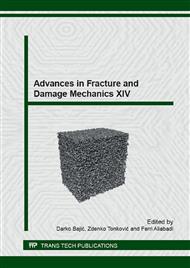p.25
p.29
p.33
p.37
p.41
p.45
p.49
p.53
p.57
Evaluation of Bond Strength between Steel Fiber Reinforced Ultra-High Strength Concrete and Rebar
Abstract:
In order to design reinforced concrete member using steel fiber ultra high strength concrete, current structural design methods should be re-evaluated because it has significant difference in material characteristics compared with normal concrete. In this study, bond strength of steel fiber reinforced ultra-high strength concrete was evaluated. For this purpose, direct pull out test specimens were constructed with variables of cover thickness, compressive strength of matrix and fiber inclusion ratio. According to the test, bond strength were sensitively varied with cover thickness and fiber inclusion. Because bond strength was determined by tensile strength of concrete. Comparing test results with theoretical methods suggested by Tepfers, specimens without steel fiber show good agreement with analytical method, because this method were based on elasticity. And other empirical equations were evaluated with other previous researches.
Info:
Periodical:
Pages:
41-44
Citation:
Online since:
September 2015
Authors:
Price:
Сopyright:
© 2016 Trans Tech Publications Ltd. All Rights Reserved
Share:
Citation:


